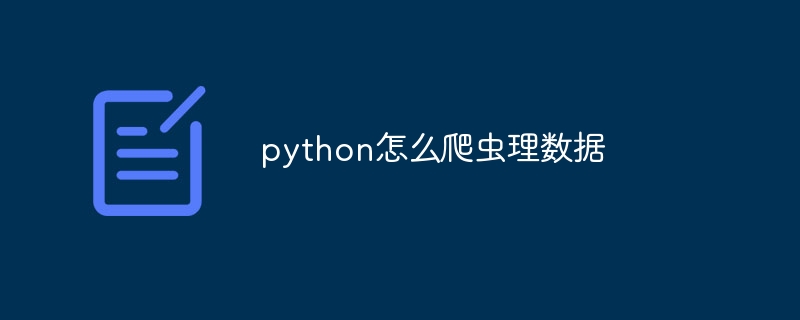python怎么爬虫理数据
python爬取和解析数据步骤如下:1. 确定数据源;2. 发送http请求;3. 解析响应;4. 存储数据;5. 处理异常。具体示例是,通过requests和beautifulsoup库从stack overflow网站爬取python问题的标题和投票数,并存储到csv文件中。

Python爬取和解析数据
在Python中,可以使用以下步骤来爬取和解析数据:
1. 确定数据源
首先,确定要爬取数据的网站或API。
立即学习“Python免费学习笔记(深入)”;
2. 发送HTTP请求
使用requests库发送HTTP请求以获取目标网页的HTML或JSON响应。
3. 解析响应
使用BeautifulSoup或lxml等解析器解析响应内容,提取所需数据。
4. 存储数据
将爬取的数据存储在数据库、CSV文件或其他合适的地方。
5. 处理异常
处理爬虫过程中可能遇到的异常,例如服务器错误或网络超时。
具体示例:
假设要从 Stack Overflow 网站爬取有关 Python 问题的标题和投票数。
代码示例:
import requests from bs4 import BeautifulSoup # 发送HTTP请求 response = requests.get('https://stackoverflow.com/questions/tagged/python') # 解析响应 soup = BeautifulSoup(response.text, 'html.parser') # 提取数据 titles = [question.find('a', class_='question-hyperlink').text for question in soup.find_all('div', class_='question-summary')] votes = [question.find('span', class_='vote-count-post').text for question in soup.find_all('div', class_='question-summary')] # 存储数据 with open('python_questions.csv', 'w') as f:
以上就是python怎么爬虫理数据的详细内容,更多请关注其它相关文章!
